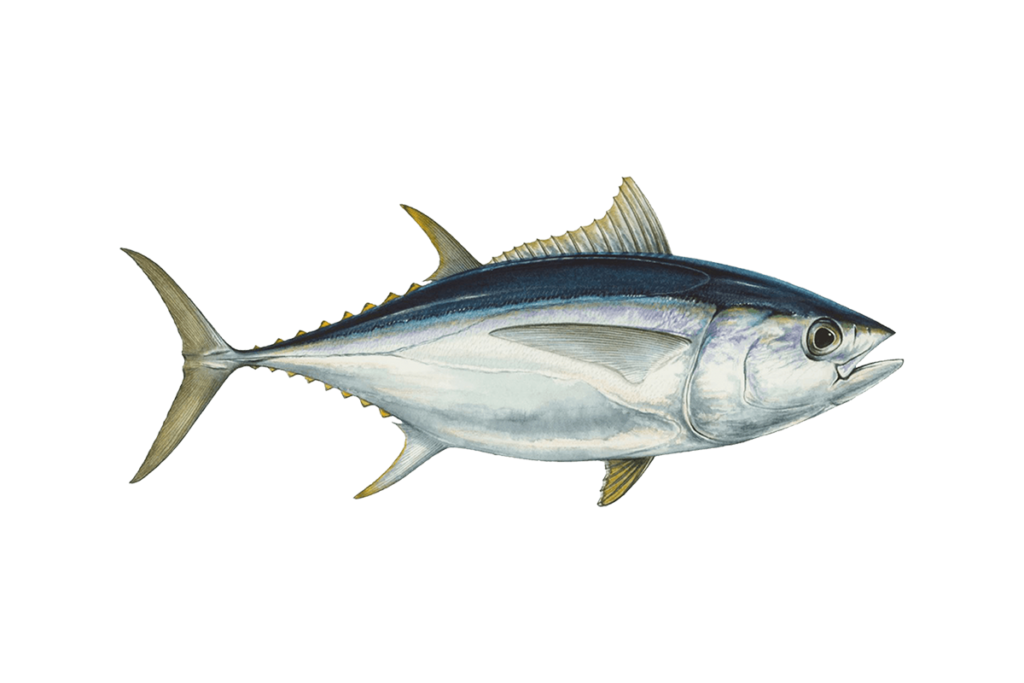Can a Dog Eat Tuna? A Comprehensive Guide About Dog’s Diet
Many pet owners wonder if it’s safe to feed tuna to their dogs. Tuna is packed with protein, omega-3 fatty acids, and essential nutrients, making it a valuable food source for humans. But when it comes to dogs, there are specific considerations to keep in mind. While tuna can offer some benefits, there are potential risks, such as high mercury levels, that make it important to feed tuna in moderation. This article explores the pros, cons, and best ways to safely include tuna in a dog’s diet.

Can Dogs Safely Eat Tuna?
Yes, dogs can eat tuna safely, but only when it’s given as an occasional treat. Tuna contains essential nutrients that can benefit a dog’s health, including lean protein and omega-3 fatty acids that contribute to skin, coat, and joint health. However, tuna also has higher mercury levels compared to other types of fish, which can accumulate in a dog’s system if consumed too frequently.
Nutritional Benefits of Tuna for Dogs
Tuna is nutrient-dense and offers several health benefits when given to dogs in moderation:
- Protein for Muscle Health: Tuna provides a rich source of high-quality protein that supports muscle development and repair.
- Omega-3 Fatty Acids for Skin and Coat Health: The omega-3s in tuna help reduce inflammation, enhance skin health, and promote a shiny coat, especially beneficial for dogs with skin sensitivities.
- Essential Vitamins and Minerals: Tuna contains vitamin B12, D, E, potassium, and selenium, all of which support immune health, brain function, and cell repair.
Risks of Feeding Tuna to Dogs
Despite its benefits, feeding tuna to dogs does come with some risks. Here’s what to keep in mind to ensure tuna remains a safe, occasional addition to your dog’s diet:
- Mercury Levels: Tuna, especially larger varieties, contains higher mercury levels compared to smaller fish. Over time, excessive mercury exposure can cause mercury poisoning, affecting a dog’s kidneys, digestive tract, and nervous system. Stick to small, infrequent portions to reduce this risk.
- High Sodium in Canned Tuna: Canned tuna may contain high sodium levels, especially varieties packed in oil or with added salt. Always choose “in water” varieties with no added salt, and thoroughly rinse canned tuna before serving.
- Digestive Upset: Tuna can be rich and may cause digestive upset in some dogs, especially those with sensitive stomachs. Signs of intolerance might include vomiting, diarrhea, or lethargy.
- Potential Allergies: Although rare, some dogs may develop allergies to fish, including tuna. Monitor for symptoms like itching, redness, or digestive discomfort when introducing tuna.
How to Safely Feed Tuna to Dogs
To maximize the benefits of tuna and minimize any risks, proper preparation is crucial:
- Choose Low-Mercury Options: Light tuna, such as skipjack, typically contains lower mercury levels compared to albacore (white) tuna. Opt for light tuna when possible.
- Cooked Over Raw: For dogs, it’s best to serve fully cooked tuna, as raw fish can contain harmful bacteria and parasites. Lightly steamed or baked tuna without seasoning is an ideal choice.
- Avoid Seasonings: Serve plain tuna without salt, oils, or seasonings that can upset a dog’s stomach. Ingredients like garlic, onion, and added spices are toxic to dogs and should be avoided.
- Serve in Small Portions: For most dogs, a small portion of tuna (such as one to two ounces) once or twice a month is sufficient. This keeps mercury exposure low and allows your dog to enjoy a variety of proteins safely.
How Much Tuna Can a Dog Eat?
The recommended portion size depends on a dog’s size and dietary needs. Here are some general guidelines to help you incorporate tuna into your dog’s diet without overdoing it:
- Small Dogs: Small dogs should have no more than half an ounce to one ounce of tuna per month.
- Medium Dogs: Medium-sized dogs can have up to two ounces of tuna once or twice a month.
- Large Dogs: Large dogs may have up to three ounces of tuna once or twice a month.
These guidelines help prevent excessive mercury exposure and make tuna a healthy, occasional treat rather than a dietary staple.
Health Benefits of Omega-3s in Tuna for Dogs
One of the most significant advantages of feeding tuna to dogs is its omega-3 content, which supports multiple aspects of canine health:
- Improved Skin and Coat Health: Omega-3s in tuna contribute to a healthier skin barrier and can alleviate dryness and irritation, resulting in a shiny, healthy coat.
- Anti-Inflammatory Properties: Omega-3s support joint health, making tuna an excellent choice for older dogs or those with arthritis.
- Heart Health: Omega-3 fatty acids promote cardiovascular health, supporting healthy blood flow and maintaining healthy triglyceride levels.
- Brain Health: Omega-3s are essential for cognitive health and can help maintain mental sharpness in aging dogs.
Safe Fish Alternatives to Tuna for Dogs
If you’re looking to diversify your dog’s diet with fish but are concerned about tuna’s mercury content, consider these safer alternatives:
- Salmon: Salmon is rich in omega-3s and a safe option when fully cooked and served in small portions.
- Sardines: Low in mercury and high in omega-3s, sardines are a great option for dogs and can be served whole.
- Whitefish: Often included in dog food, whitefish is mild and easily digestible for most dogs.
- Flaxseed Oil: If your main goal is to boost omega-3 intake, adding flaxseed oil to your dog’s diet is a plant-based alternative.
Signs of Mercury Poisoning in Dogs
Excessive tuna consumption can lead to mercury toxicity in dogs, though it is rare. Symptoms of mercury poisoning may include:
- Gastrointestinal Distress: Vomiting, diarrhea, and lack of appetite.
- Neurological Symptoms: Tremors, disorientation, and lack of coordination.
- Kidney Issues: Excess mercury can strain the kidneys, leading to lethargy and fatigue.
If you observe any of these symptoms in your dog after consuming tuna, consult a veterinarian immediately. Keeping tuna an occasional treat helps minimize this risk.
Tips for Introducing Tuna to Your Dog’s Diet
If you decide to offer tuna, following these tips can help make the experience safe and enjoyable:
- Start with a Small Amount: Begin with a small piece of tuna and observe your dog for any signs of intolerance.
- Monitor for Allergies: Watch for signs of itching, redness, or digestive upset, which may indicate a fish allergy.
- Mix with Dog Food: Adding a small amount of tuna to your dog’s regular food can introduce the flavor without overwhelming their diet.
- Check with a Veterinarian: For dogs with special health considerations, it’s always best to consult a veterinarian before adding new foods like tuna to their diet.
Final Thoughts on Feeding Tuna to Dogs
Tuna can be a beneficial, tasty addition to your dog’s diet when served in moderation and prepared safely. With lean protein, omega-3 fatty acids, and essential vitamins and minerals, tuna supports joint health, coat vitality, and cognitive function. However, due to mercury concerns, it’s best to serve tuna sparingly, making it an occasional treat rather than a primary food source.
By serving small portions of plain, cooked tuna without added salt or seasonings, you can introduce variety to your dog’s diet while ensuring their health and safety. For guidance on feeding tuna or other fish, consulting your veterinarian is always a good idea.
